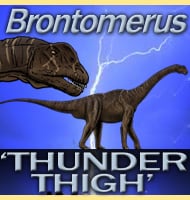Petrolacosaurus
In Depth Petrolacosaurus is the first diapsid known in the fossil record. The teeth are small and sharp suggesting insectivorous feeding, like the vast majority of the other small reptiles of the time. Also like many of the early diapsids, it was superficially similar to today’s small lizards. Petrolacosaurus is very similar to another reptile … Read more
